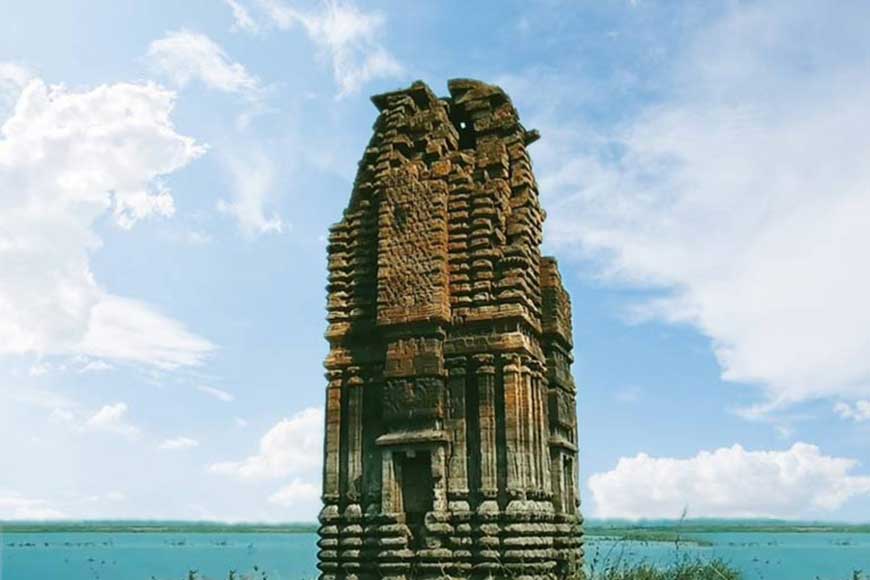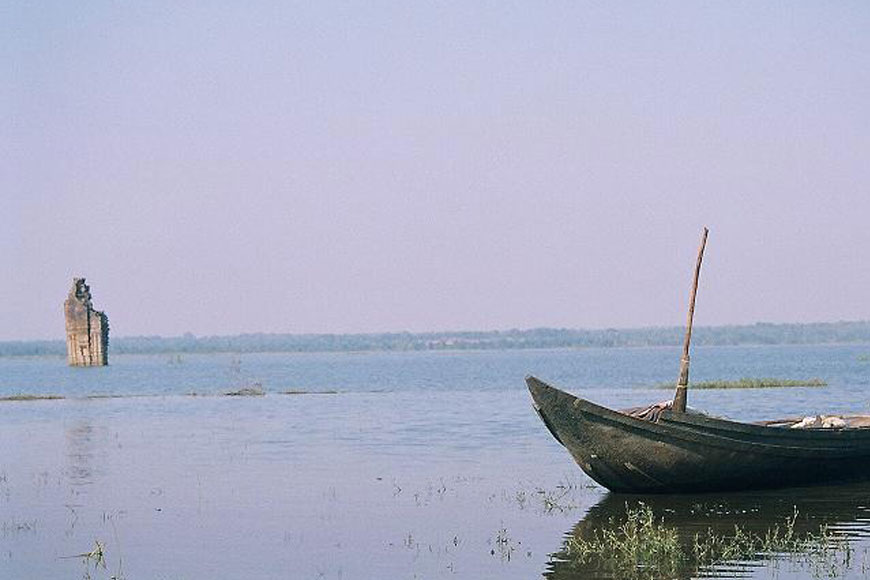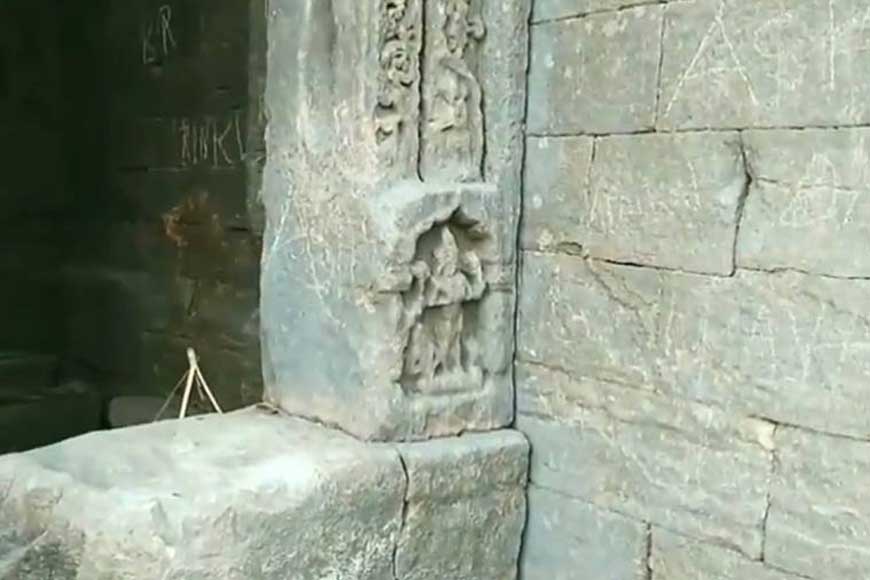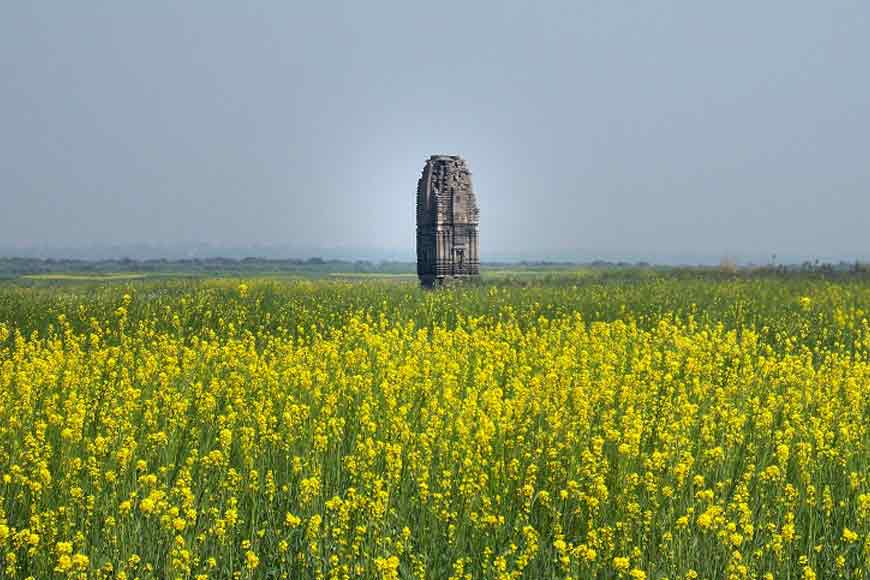Ancient Jain temples submerged by Panchet Dam in Purulia

Telkupi (or Tailakampi) is a small non-descript village on the banks of Damodar River under Raghunathpur police station in Purulia district. The place has recently garnered interest among archaeologists and tourists, who flock there to view the Jaina architectural ruins of temples (Bhairavasthan) submerged by Panchet Dam in the Damodar River.
The area, along with the temples from 8th-12th centuries (Pala period) were submerged between 1956 and 1962 as a consequence of the construction of Panchet Dam. According to Armenian-Indian archeologist, Joseph David Beglar and Dr Debala Mitra, the area contained, perhaps, “the finest and largest number of temples within a small space that is to be found in the Chutia Nagpur Circle in Bengal.” Belgar listed over 20 temples and referred to several others and to numerous mounds, both of brick and stone. Out of those, only two stand today and one more is visible half-submerged in the Damodar reservoir at the Panchet Dam. The remains of some of these ruined temples are getting visible again in the silted-up reservoir.

The place was formerly known as Tailakampi or Tailakumpi. Taila generally means oil but according to Chanakya’s Arthashastra, ‘taila’ was tax and ‘kampa’ or ‘kampan’ meant a pargana, or an administrative unit. Tailakampi paid taxes to the ruler of the land. Telkupi was the capital of Rudrashikhara, a local ruler of the area in 11th century, who helped Pala king, Ramapala to recover Verendra from Bhima. The royal chronicle of Panchkot Raj of Shikhar dynasty mentions that Rudrashikhara rose to power in 1098 AD. Historian Nihar Ranjan Ray assumes that he ruled from 1070 to 1120. Sandhyakar Nandi in his poem Ramacharitam, mentions that like wildfire, Rudrashikhara, was an expert in warfare who crushed the pride of the rulers of rivers and mountains.

There were two copper mines in the vicinity: Tamajuri and Tamakhun. Traders carried copper from these mines and transported it to Tamralipta. Tailakampi was a busy port in ancient times and a prosperous city. Most of the temples here were built between 9th-13th century AD. Jainism spread in Purulia during this time. It is believed that a majority of traders who came to Tailakampi were Jains and hence the religion proliferated in this region. Deities of a number of Hindu gods and goddesses have also been unearthed and it is believed followers of both the religions lived in harmony.
The earliest reports of the Telkupi Temples are noted by Beglar who visited the spot on two occasions. His report records three clusters of temples, the largest consisting of 13 temples on the banks of the river Damodar which was the Bhairavasthan.

Bhairavasthan was some nine kilometres from Telkupi on the south bank of river Damodar. Bhairav was the presiding deity of the cluster of temples. Bhairava is an ancient forest form of Shiva accompanied by two dogs. W. W. Hunter refers to Bhairavasthan as a Jain site with some Buddhist influence. Later, Hindus began to offer their prayers in Jain temples and transformed their identities into Hindu deities. Even to this day, local villagers chant ‘Telkupi Bhairavnath Hay/ Aranar Baneshwar hay’ This Bhairavnath is Jain Tirthankar Rishavdev and his vehicle was an ox. The villagers now worship the ancient sculptures of Rishavdev as Shiva.










